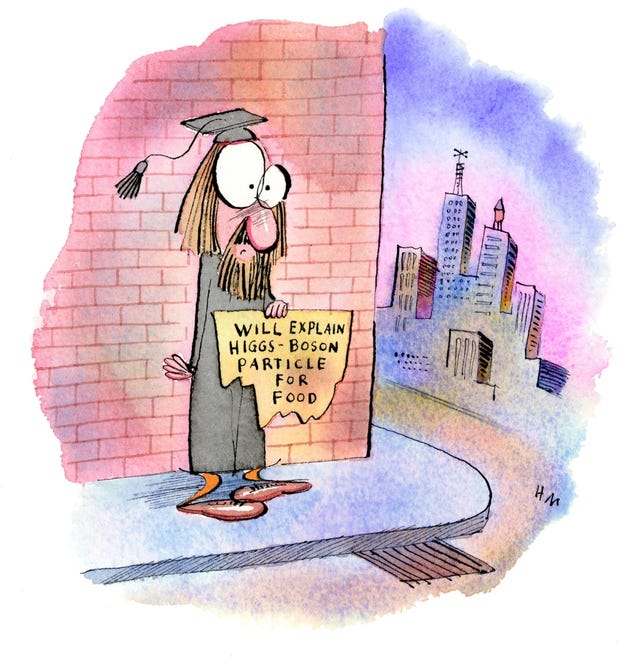... People With Ph.D.s in Science

Cartoon by Hal Mayforth
As the Boston Globe reports:
In the Boston area, where more than 8,000 postdocs — largely in the biosciences — are estimated to work, tough job prospects are more than just an issue of academic interest. Postdocs are a critical part of the scientific landscape that in many ways distinguishes the region — they are both future leaders and the workers who carry out experiments crucial for science to advance.The plight of postdocs has become a point of national discussion among senior scientists, as their struggles have come to be seen as symptoms of broader problems plaguing biomedical research. After years of rapid growth, federal funding abruptly leveled off and even contracted over the last decade, leaving a glut of postdocs vying for a limited number of faculty jobs. Paradoxically, as they've gotten stuck, the pursuit of research breakthroughs has also become reliant on them as a cheap source of labor for senior scientists.This wasn't such an issue decades ago, but universities have expanded the number of PhD students they train — there were about 30,000 biomedical graduate students in 1979 and 56,800 in 2009. That has had the effect of flooding the system with trainees and drawing out the training period.
It
has also had the effect of turning a healthy competition for scientific
resources into a frantic "hypercompetition," according to four
prominent scientists who recently published a journal article,
"Rescuing U.S. Biomedical Research From its Systemic Flaws." For
example, only 10% of grant applications are successful compared to 30%
in recent times, due to ever-increasing applications and a continual
decline in funding.
According
to the authors, the result has been applications that don't make bold,
creative proposals. Instead, they take the safer route, relying on
"translational research" that focuses on curing disease (or the promise
of doing so) rather than studying the underlying problems of biology
that could truly advance the field.

No comments:
Post a Comment